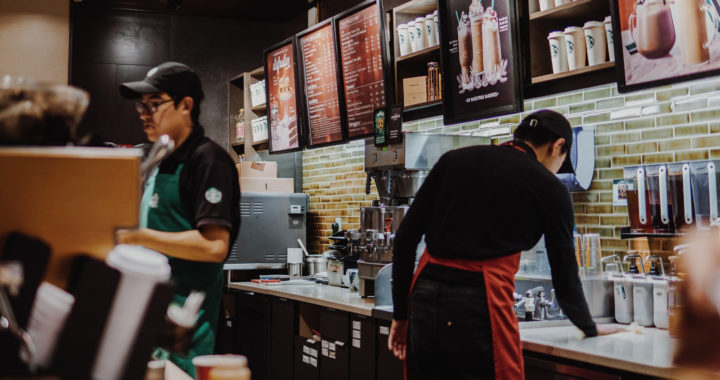It is easy to comprehend the incontestable fact that Starbucks generates most of its revenues from the operation of the thousands of its stores located across the world. It is a food and beverage business after all. However, it is also important to highlight the fact that a sizeable portion of its total revenues comes from its Starbucks Card business.
The company generates hundreds of millions of dollars each year from its membership and loyalty program business alone. It is also valued at about USD 12 billion. Public documents and mandatory filings showed that it generated about USD 155 million in additional profits in 2021. How exactly does Starbucks earn from its Starbucks Card?
Appreciating the Value of the Starbucks Card Business: The Importance of Its Membership and Rewards Program
Starbucks launched its gift card product in 2001. It works similar to other gift cards offered by other retail-oriented and consumer-related businesses because it comes preloaded with a particular amount that can be used to purchase items in Starbucks stores. Furthermore, it is a loadable medium in which its users can store their desired amount similar to a prepaid debit card or an actual debit card for a savings account.
The gift card later evolved and became the Starbucks Card. Furthermore, more than just a gift card, it has become both a membership card and an avenue for rolling out perks and privileges for repeat customers, thus functioning as a loyalty card as well.
Note that the company specifically introduced the Starbucks Reward for the registered users of its card. Included in the range of perks are the free use of Wi-Fi internet access in stores, no charge for flavored syrups and soy milk, and free refills on brewed drip coffee, iced coffee, or tea. Each purchase can earn users with starts that can be redeemed for rewards.
The Starbucks Card fundamentally functions similar to the miles program of airliners. Note that it has further evolved to take advantage of the accompanying mobile app that provides a platform for users to reload their cards or transfer money to the cards of other users.
It is important to highlight the fact that there were 4 million cards activated just 8 months after the entire program was introduced in 2001. It now has over 25 million users around the world and the collated sales of Starbucks around the world showed that the utilization of its cards collectively represents more than 50 percent of in-store purchases.
The entire Starbucks Card business, which also consists of the specific Starbucks Rewards program, is a prime example of a flywheel business considering how it has now become a revenue-generating initiative and a critical part of the overall business strategy of Starbucks.
Furthermore, it is also important to stress the fact that through this particular business and the revenue and profit it generates, Starbucks seems to be a bank that sells coffee and related food and beverage products. Of course, this statement is an overstretch. But the entire model of the Starbucks Card is similar to how commercial banks earn money.
Four Ways It Earns From Its Membership and Rewards Business: How and Why Starbucks Functions Similar to a Bank
Understanding better how Starbucks earns money from its Starbucks Card business requires understanding the four specific but different ways the company generates income from promoting and selling these cards. Take note of the following:
1. Card Sales and Additional Purchases: Remember that the Starbucks Card is also a gift card that can be purchased at USD 15.00 or more or less depending on the country. Some consumers would purchase one as a gift to relatives, friends, or colleagues. Of course, whenever they buy this card as a gift, most of them would also buy an item for themselves since they are already in a Starbucks store. Hence, a USD 15.00 sales become a USD 25.00 or more. The card supplements in-store sales.
2. The Use of Card and Additional Purchase: Recipients of the card can use it to purchase a beverage, food, or whatever item in stores amounting to USD 15.00. However, in some cases, this stored amount is not enough for a single individual, especially if they intend to purchase additional in-store for themselves. The card can also supplement in-store sales if an individual is accompanied by another individual.
3. Earnings from Reinvesting Card Sales: Another interesting way Starbucks earns money from its Starbucks Card business is from the reinvestment of card sales. Note that consumers fundamentally give the company money without immediately getting anything in return whenever they purchase these cards. Starbucks invests this money in different instruments and securities and earns through interest or capital appreciation. This is also how commercial banks operate and earn money.
4. Breakage from Unused Cards: Some companies generate revenues from goods or services that are paid but unused. These revenues are collectively referred to as breakage in accounting. Starbucks generates breakage for the simplest reason that some recipients will never use their cards and some active cards have stored money that will never be spent. The company generates USD 155 million from breakage in 2021.
Based on the aforementioned, the cards themselves are a revenue-generating business that has accounted for more than 40 percent of the total revenues of Starbucks. However, more than just the money generated from the card sales, it has been estimated that the company makes money twice to thrice more from each card it sells.
Then there are earnings generated from reinvesting either the amount generated directly from every card sale or whenever a customer stores money from his or her card. It is also important to highlight the fact that Starbucks earns hundreds of millions of dollars in pure profits from unused Starbucks Card or the unspent amount left in each card.
